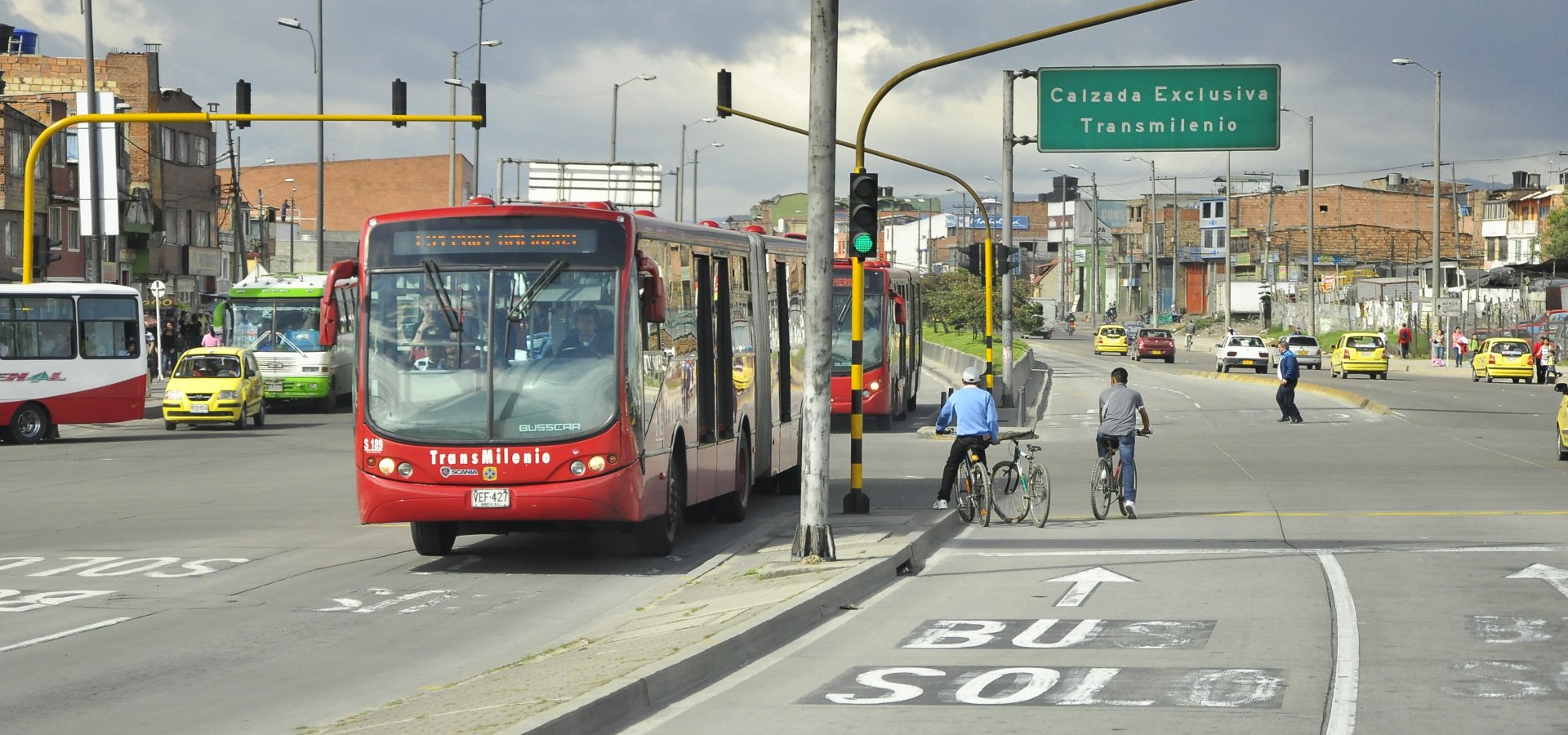Bus Rapid Transit (BRT) systems have been widely hailed as innovative solutions for growing urban agglomerations around the world. Lillian Sol Cueva argues that their introduction helped to ameliorate pressing issues of congestion and harmful emissions in Mexico. But for the systems to be truly successful, a holistic approach towards public transportation is necessary.

Bus Rapid Transit Systems have taken South America and Asia by storm – but can they solve the structural challenges of public transportation that expanding urban agglomerations face? (Photo by Mariana Gil/EMBARQ Brasil, modified, CC BY-NC 2.0)
It is now clear that public policies of extending urban motorway networks, which have been followed by a large number of cities throughout the world, are not the way to achieve a sustainable and energy-efficient transport system. On the contrary, these are related to dependency on and high consumption of fossil fuels, as well as other negative impacts, such as health problems, accidents and endless traffic jams. In Mexico, transportation is equivalent to approximately half of the total national energy consumption (SENER, 2014), 31 percent of the country’s CO2 emissions (5th National Communication to the UNFCCC), and around 16,000 deaths by traffic-related accidents (STCONAPRA, 2013) per year.
An effective way to encourage travelers to reduce private car use is to provide more efficient forms of transportation options, such as public transportation and non-motorized vehicles. Currently, of the public transport modes available, Bus Rapid Transit (BRT) systems are by far the most promoted in the world, growing by a staggering 383 percent in the last ten years alone (ITDP). Although the system is bus-based, it operates like a rail-based system. The main advantage of BRT over a rail system is its low cost per kilometer, its low operating costs and greater flexibility; they also require less time to build.
How does the situation look like in Mexico?
In Mexico, BRT systems were successfully brought into operations for the first time in the city of Leon in September 2003, followed by other cities, such as Mexico City, Guadalajara, Puebla, Chihuahua and Monterrey. Until now, ten BRT systems operate in Mexico with 222 km of designated lanes, and with daily passenger number of 1.8 million people (EMBARQ Mx; ITDP). Mexico’s BRT system is the second most expanded BRT system in the world after China that has a network of 552 km. In Mexico City alone, the BRT system has 105 km designated lanes, moves 900,000 passengers a day, it has reduced 42 percent of travel times for long distances (EMBARQ Mx), and has led to a reduction of 122,000 tCO2 (Metrobus).
However, BRT systems in Mexico still have to face challenges to revolutionize urban mobility. First, it has to consider that as a bus-based system still imply large amounts of fuel consumption per kilometer, and since they run above ground, fuel consumption cannot be reduced significantly due to traffic at intersections. Second, the systems are not capable of reducing the total amount of energy consumed by the sector since a large number of single trips (50-60% approx.) are carried out in the slow, overcrowded, and polluted buses, such as “microbuses” and “combis” (UNHabitat); and that the rate of motorizations has not declined but doubling up in just 15 years (UNHabitat). Third, they have been unable to meet the needs of beneficiaries of universal design, the growing trip demand, insecurity issues such as harassment, and the long history of urban sprawl. Finally, since not all cities in Mexico have access to the same quality of diesel (i.e. ultra-low sulfur diesel fuel), energy-efficient technology such as EURO V or VI cannot be successfully implemented.
Hence, BRT systems in Mexico have to integrate transport systems, establish a single payment scheme and restructure routes. In the same way, better and alternative energy sources (i.e. electricity, hybrid systems), new efficiency standards (i.e. efficiency standards for cars, heavy good vehicles and public transport vehicles) and new technologies have to accompany BRTs roll-out. Moreover, the promotion of BRT systems has to discourage private vehicles use.
Consequently, BRT cannot be considered as a miracle technology but rather a cost-effective public transport option that has enormous potential for further fuel savings if positive and negative effects, and additional measures are taking into consideration. Hence, the opportunity still exists in the transport sector in Mexico.
Lillian Sol Cueva is a Mexican citizen and holds a degree in International Relations from the National Autonomous University of Mexico and a master’s degree in Humanitarian Action from the University of Groningen, the Netherlands. Her professional experience includes work in public policy, human and womens rights, sustainable development, energy and climate change. She has gained professional experience as a researcher, project coordinator, volunteer and public official in several national and international NGOs, as well as the Mexican government.